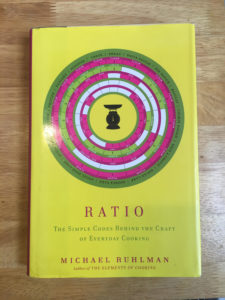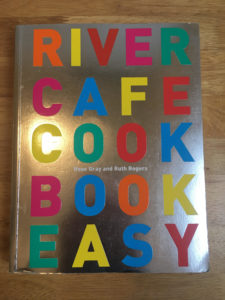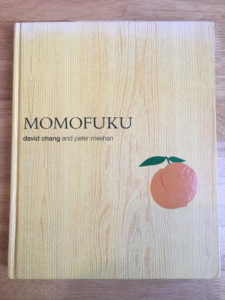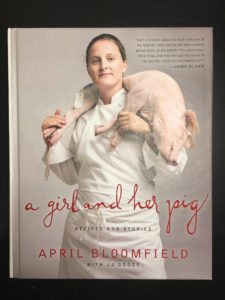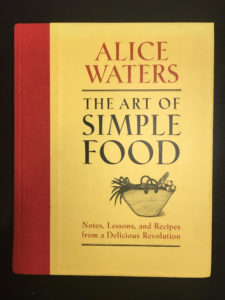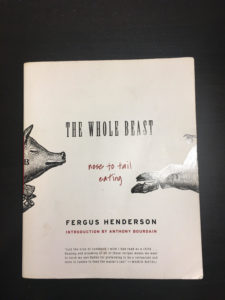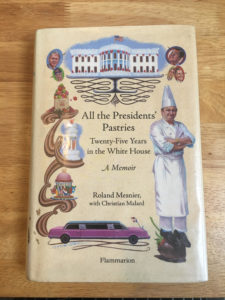Last two and half weeks have been life changing. I haven’t had to cook at home for more than 2 consecutive meals since I started working in the restaurant industry. I dug out some of my favorite cookbooks and adopted couple news ones. I look for cookbooks that could help me formulate simple meal plans, ranging from making a broth for noodles, to baking a cake for myself and friends. I rarely follow a recipe verbatim, except in baking, yet these cookbooks give me ideas for using simple and common ingredients. I only hope to create contents that could be just as resourceful and helpful as these cookbooks. Please enjoy my selections:
- Ratio, by Michael Ruhlman
This is not a traditional cookbook, but a great reference to basics in cooking and baking. The title of the book says it all…cooking and baking is all about combining the right ratios of ingredients in order to make a dish shine. Not only does the book teaches textbook ratios, but it also goes in depth about choosing the right technique for recipes. One of the most fascinating lessons I learned is by using different mixing methods, my baked goods could end up tasting very differently in texture when given the same ratio of ingredients.
- River Cafe Cookbook by Rose Gray and Ruth Rogers
River Cafe Cookbook is one of my favorite cookbooks because its recipes are so simple and easy to execute as a home cook. River Cafe is a well known English-Italian Restaurant in London. The River Cafe’s food is seasonal driven. The chefs cook with local farm produce, meat, and dairy while paying homage to rustic Italian dining. My favorite section in the book is on cooking poultry. While making a Sunday Roast (chicken) is a British tradition, some recipes use popular Italian ingredients such as sage, prosciutto, lemons, or parsley to elevate the simple dish.
- Momofuku Cookbook by David Chang
I love Momofuku’s cookbook because of its eccentric recipes of combining Asian flavors with American Ingredients and Western Cuisine. The book is divided into three sections based on the first three Momofuku restaurants in New York, Noodle Bar, Ssam Bar, and Ko. I must have read David Chang’s ramen recipes a dozen times, and the recipe never fails to inspire me to add depth and flavors (not more ingredients…big difference). Also, though some ingredients are unobtainable in retail, such as foie gras, most of the recipes are simple and serve as guidelines to cook simple food.
- A Girl and Her Pig by April Bloomfield
I have read this cookbook front and back few times. Chef April’s recipes are thorough, yet easy to execute. Although the title of the book might suggest a heavy collection of meat recipes, a good portion of the cookbook dedicates to making salads and roasted vegetables. My favorite recipe in the book is Caesar Salad. Her flavors are bold and portions are generous; a hearty bowl of Caesar Salad might just be the perfect dinner choice when I don’t have the patience to cook.
- The Art of Simple Food by Alice Water
This is one of the first cookbooks I own. I’d highly suggest this book to all levels of cooks. Most of the recipes have only 3 to 5 ingredients, excluding the seasonings. Alice Water is known as a pioneer in promoting Californian Cuisine, which focuses on sourcing and cooking local ingredients. Her cookbook covers a broad range of repertoire, which is helpful to anyone who is either looking to begin or advance his or her household culinary skillset.
- The Whole Beast, Nose to Tail Eating, by Fergus Henderson
Another great cookbook written by a British chef. As the book title suggests, Chef Fergus Henderson is an advocate in using and eating every part of animals. Nose-to-tail eating is also a lesson on managing food waste. When our budgets are slim and costs are high, we could be creative in utilizing all part of ingredients in our meal. One of my favorite recipes in the book is “Roast Bone Marrow and Parsley Salad”. I will not be able to get my hands on bone marrow in retail, but the essence of the dish is animal fats mixed in with herbs and pickles…kind of like eating a grilled cheese sandwich with dill pickles.
- All the Presidents’ Pastries, by Roland Mesnier
Last but not least, this is a memoir written by Pastry Chef Roland Mesnier, who served under 5 U.S. Presidents, from Jimmy Cater to George W. Bush at the White House. At the end of the book, Roland gave out 12 recipes that were favored by the Presidents. During his time as the Pastry Chef of the White House, Chef Roland often made elegant desserts for banquets and receptions. Nonetheless, the recipes at the end of the book are for “home cooking”; these were desserts served to the First Families on daily basis. Did you know Bill Clinton is allergic to chocolate?
Enjoy my selections! Let me know if you have any great suggestions on cookbooks!
